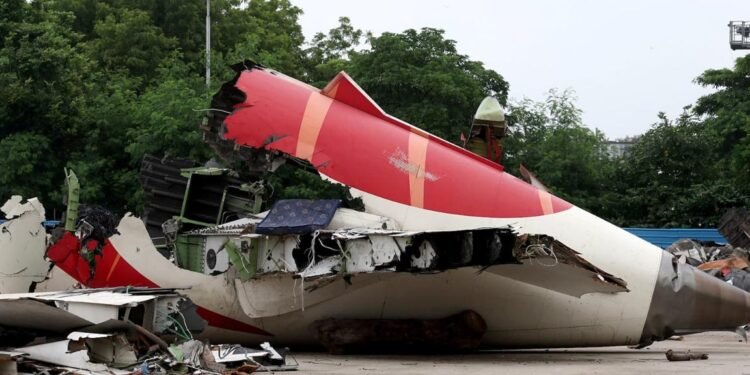Air India flight disruptions on the rise after Ahmedabad crash, raising cancellation questions as Air India faces deeper challenges
Air India crash report leaves key safety questions unanswered
Air India faces probe after technical glitch in crash
Dubai: In the wake of the tragic Air India Flight 171 crash in Ahmedabad, which killed 241 people, India’s national carrier has seen a noticeable increase in technical glitches, emergency landings and flight cancellations. The trend has caused considerable concern among both travellers and aviation experts.
Air India Express flight returns to origin after technical glitch
An Air India Express flight, IX110, which departed from Hyderabad for Phuket on Sunday, was forced to return to its origin due to a technical glitch just 16 minutes into the flight. While all passengers and crew landed safely, the incident is one of several the airline has experienced in the past month, which has led to increasing operational disruptions in recent times.
Disruptions not limited to technical faults
These are not isolated incidents. Since mid-June, Air India and its low-cost subsidiary Air India Express have faced multiple challenges:
Flight AI315 – a Boeing 787 Dreamliner – was forced to return mid-air after the crew detected a mechanical fault.
Flight AI143 from Delhi to Paris was cancelled due to a mechanical fault during pre-flight checks. The return flight from Paris also had to be cancelled due to night-time operating restrictions.
A flight from Ahmedabad to London Gatwick was cancelled, not due to a mechanical fault, but due to the unavailability of the aircraft due to post-accident checks.
The Dubai-Jaipur Air India Express flight was reportedly kept on board for five hours without air conditioning or food due to a mechanical fault.
A day after the accident, an Air India flight from Phuket to Delhi requested an emergency landing after a bomb threat, which later turned out to be a rumour.
In Kolkata, a San Francisco-Mumbai flight was stopped midway due to an engine problem during a routine check at a scheduled stop.
Air India Express flight IX-2564 from Delhi to Srinagar via Jammu returned to the capital on Monday. It was scheduled to land in Jammu but the pilot diverted to the airport before deciding to return to Delhi.
Air India Express cancelled two flights from Thiruvananthapuram to the United Arab Emirates on Sunday – IX 539 to Dubai and IX 537 to Abu Dhabi.
More than 80 Air India flights have been cancelled in the week since the accident, with both technical and non-technical disruptions. Passengers have also raised concerns about faulty in-flight systems and limited communication – causing widespread discomfort.
Tata-owned Air India’s ambitious turnaround
Since the Tata Group reacquired the erstwhile state-owned carrier in early 2022, Air India has embarked on a challenging journey to reverse years of decline. The ambitious plan includes merging four airlines – Air India, Vistara, Air India Express and AirAsia India – as well as restructuring its aging fleet and modernising its entire operations.
But the accident forced a reset. Post-accident safety checks and enhanced maintenance protocols have reduced aircraft availability, impacting long-haul and international schedules. Air India has already announced a 15% reduction in long-haul services to stabilise operations.
Even before the crash, the airline was facing turmoil — frequent delays, aging aircraft and a brand struggling to meet rising customer expectations in a competitive global aviation landscape.
Regulatory scrutiny intensifies
India’s Directorate General of Civil Aviation (DGCA) has mandated enhanced monitoring of Air India’s Boeing 787 fleet. The move has raised questions about the adequacy of previous oversight.
Aviation experts say the underlying problems extend beyond a single airline. “It’s the entire ecosystem — maintenance, staffing, training, aviation infrastructure — that needs to be kept up,” says Kapil Kaul, CEO of aviation consultancy CAPA India.
India is one of the world’s fastest-growing aviation markets, with more than 800 aircraft and 242 million passengers annually — a figure that is expected to double in five years. But with this growth, the number of errors is falling. Analysts are now calling for structural reforms in regulation, fleet management and route planning.
What lies ahead
For now, Air India is stuck in a period of transition and instability. The Tata Group has been struggling before With every cancellation, every turned-around flight, the spotlight will only grow brighter.














































































